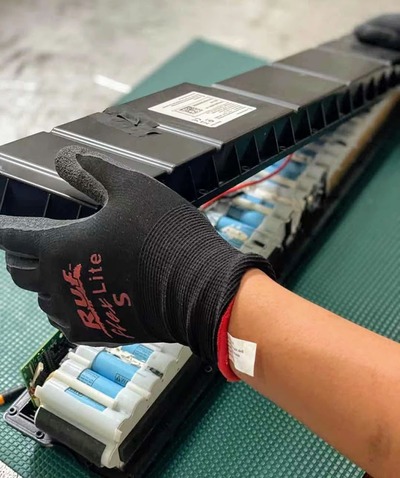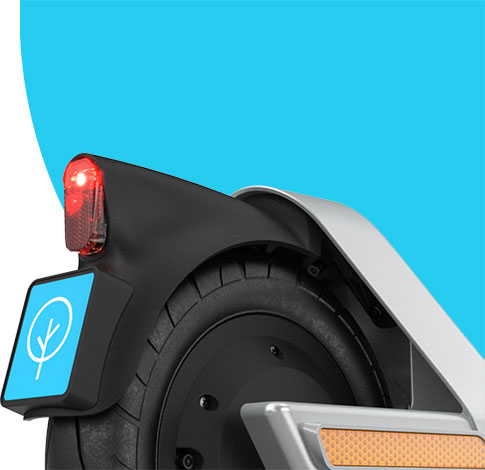Battery production is one of the most carbon-intensive parts of e-scooter manufacturing, which in turn contributes the most carbon to a scooter’s overall lifetime emissions.
This is a critically important fact. It’s what guides Bird’s approach to developing new technologies like structural integrated batteries with the industry’s only IP68 rating. These batteries, similar to those used in the newest Tesla model cars, offer greater range, superior sustainability and the highest level of protection available against damage caused by dust, dirt and water.
It’s also the driving force behind our work with IT Asset Partners (ITAP), a Los Angeles-based tech company that’s leading the industry in reverse logistics and EV-battery second life.
ITAP began their reverse logistics work with computers but quickly realized that, just like chips, mouses and keyboards, the batteries powering these devices could also have useful second life applications. As the EV and micro-electric industries took off, the need for innovative companies working to upcycle batteries only increased.
“The circular economy is where the world is going, and it will help determine how global businesses function over the next 10 years,” said Robert Mullaney, Director of Business Development at ITAP. “As battery technology has improved year over year, their second life potential has increased as well, allowing them to be used in broader and more advanced applications. This includes things like computers and computer chargers.”
Second Life of Bird Scooter Batteries
This reality can be seen with Bird batteries.
When one of our scooters reaches the end of its usable life, it’s broken down into its recyclable components including batteries, which are safely stored until an adequate volume has been reached. Once enough end-of-life scooter batteries are available, we ship them to our partners at ITAP. This is when the magic happens.
“When Bird batteries are received, we immediately get to work dismantling each battery module, taking it down to its cellular level,” explains Mullaney. “For older models, that means 32 cells that are taken apart and individually tested to determine their milliampere/hour, or mAh.”

Cells are qualified according to their remaining capacity, which in some cases can be surprisingly high. Those with an mAh of 2200-2600 are set aside to be used in items such as high-powered phone chargers and electric toys, while those between 1200-2200 can be used in smaller items like a backup phone charger. Anything under 1000mAh will be smelted in order to retrieve the remaining usable cobalt, a valuable process that helps reduce unnecessary cobalt mining.
“Bird has always been committed to sustainability, and our partnership with ITAP is a critically important part of that commitment,” said Rebecca Hahn, Chief Corporate Social Responsibility Officer at Bird. “By working with a trusted leader in technology and reverse logistics, we can keep our vehicle batteries in use long after they’ve powered their last scooter ride.”
Maintaining Supply Through Reduced Waste
Interestingly, these advanced second life applications do more than just help the environment. They also ensure that the increasing demand for batteries can be efficiently and ecologically met, particularly in a manufacturing ecosystem that relies heavily on imports from across the Pacific.
“Battery manufacturing simply can’t keep up with the demand for new electric battery powered products, so ITAP and the circular economy have stepped in both to solve the supply problem and avoid waste,” said Mullaney. “It’s a win-win that maintains our battery supply while looking after our planet.”
According to Mullaney, the more thought that gets put into battery second life on the front end, the more efficient and sustainable the second life process becomes overall. “When you’re thinking about what will ultimately happen on the back end,” he concluded, “you’re actually thinking two steps ahead of everyone else.”
To learn more about Bird’s recycling and second life efforts, check out our sustainability page or subscribe to the Bird Cities Blog for the latest on partnerships that are helping us decrease the carbon footprint of our company.

